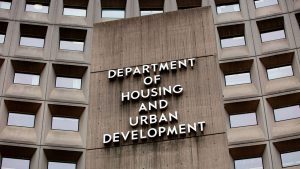 When the Biden Administration and HUD Secretary Marcia L. Fudge took office, Americans were facing numerous challenges, including the COVID-19 pandemic, a lack of affordable housing supply, and rapidly increasing home prices. In spite of these headwinds, concerted efforts by the Department have helped millions of American households obtain or maintain homeownership.
When the Biden Administration and HUD Secretary Marcia L. Fudge took office, Americans were facing numerous challenges, including the COVID-19 pandemic, a lack of affordable housing supply, and rapidly increasing home prices. In spite of these headwinds, concerted efforts by the Department have helped millions of American households obtain or maintain homeownership.
HUD has used all the tools at its disposal, through the Federal Housing Administration (FHA), Ginnie Mae, and the Office of Native American Programs (ONAP) to help American families.
“At HUD, we have successfully implemented programs that have kept people in their homes and advanced opportunities for families of all incomes, especially low- and moderate-income families,” said HUD Secretary Fudge. “Since the start of the Administration, we have made great strides to address historical discrimination in housing, created significant opportunities for first-time homebuyers, and invested in programs to bridge the wealth gap and create paths to homeownership.”
HUD has achieved significant milestones, with a clear focus on expanding access to homeownership, supporting home retention through the pandemic, and addressing racial bias. Here are some of the things we have accomplished:
Reducing barriers for first-time home buyers
- Through a 35% reduction in the pricing of FHA’s mortgage insurance premiums implemented in March 2023, 425,000 borrowers are saving more than $336 million in aggregate in the first year of their mortgages. FHA estimates the total cost savings over the forecasted life of these mortgages is up to $1.9 billion.
- As it has for more than eight decades, FHA remained a vital means of access to homeownership for first-time homebuyers, with more than 80 percent of FHA-insured purchase mortgages going to first-time homebuyers in each of the last three years.
- Throughout the first three years of the Biden Administration, FHA has supported nearly 1.8 million homeowners with purchasing mortgages, 83.5% or 1.5 million of whom are first-time homebuyers. This past year alone, FHA’s first-time-homebuyer rate by share of originations is almost 40 percentage points higher than the conventional mortgage market.
- During that same time period, HUD worked to further expand access to homeownership by reducing some of the obstacles that prevent qualified borrowers from obtaining mortgage credit. FHA revised its policies for the treatment of student loan debt in the underwriting of FHA-insured mortgages to ensure that all borrowers were being evaluated fairly and allowed a borrower’s positive rental history to be included in evaluations of their creditworthiness for an FHA-insured mortgage.
- To increase the supply of available homeownership housing, HUD changed its property disposition policies to prioritize purchases by owner-occupants and non-profit organizations over investors.
- To educate and prepare prospective homebuyers, HUD continued to promote and encourage consultation with the more than 4,000 HUD-certified housing counselors available nationwide.
- HUD has also updated its policies to ensure survivors of domestic violence with FHA-insured mortgages can access necessary loss mitigation programs to help retain their homes and avoid foreclosure.
Helping homeowners stay in their homes during the pandemic
- From the onset of the pandemic through the end of fiscal year 2023, almost two million FHA and ONAP homeowners affected by COVID-19 obtained a forbearance, a temporary pause or reduction in mortgage payments, to stay in their homes as they sought options to return to long-term, sustainable mortgage payments and bring their mortgages current.
- In 2021, FHA and ONAP acted quickly to offer new options for homeowners to become current on their mortgages whether or not they had obtained a forbearance, simplifying processes for borrowers and lenders and developing new options to reduce mortgage payments for homeowners facing financial hardship.
- Through continuous refinement of its loss mitigation home retention options, from March 2020 through September 30, 2023, FHA and ONAP helped or is in the process of helping more than 1.1 million struggling homeowners keep their homes through mortgage modifications and other permanent monthly payment reductions.
Taking action to address racial bias in homeownership
- HUD led a first of its kind interagency taskforce committed to rooting out racial and ethnic bias in home valuations, the Property Appraisal and Valuation Equity task force (PAVE).
- HUD partnered with the Federal Housing Finance Agency and signed a historic Memorandum of Understanding to collaborate on fair housing and fair lending enforcements.
- HUD clarified that Special Purpose Credit Programs, authorized by the Equal Credit Opportunity Act, are not otherwise prohibited by the Fair Housing Act, which opened new lending programs for underserved households and communities.
“Under Secretary Fudge's leadership, the Federal Housing Administration has exhibited an unprecedented commitment to furthering homeownership for more of the nation's families,” said Assistant Secretary for Housing and Federal Housing Commissioner Julia Gordon. “With this commitment, we've been able to remove many barriers to homeownership and wealth building, particularly for households of color, through FHA programs.”

 DSNews The homepage of the servicing industry
DSNews The homepage of the servicing industry









